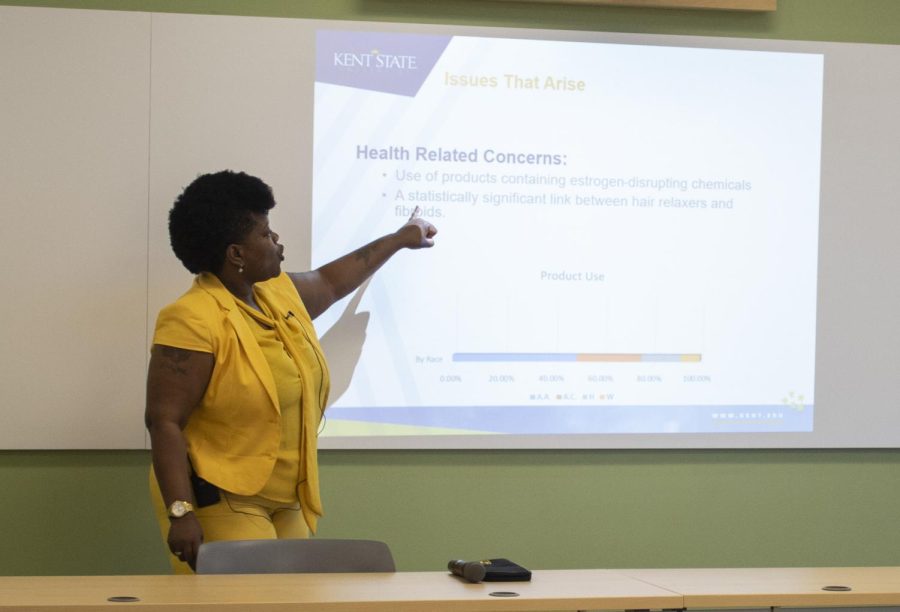Changing the norm of professional hairstyles
April 10, 2019
Felicia Johnson told students about the difficulty of understanding professional hairstyles and how to implement global and intercultural fluency in each work environment in her “Hair and the Workplace” Event at the Geauga and Regional Center Academic Center on Tuesday.
Johnson, a career advisor at Kent State, became passionate about this topic through her experience as an advisor, as well as being a licensed cosmetologist.
She touched on points of historical cases where hairstyles caused issues in some work environments, health related issues that come with breaking the natural state of a person’s hair and how negative pre-existing ideas of different hairstyles can truly alter a person’s confidence and well-being.
“Hair can play an integral role in our identity,” Johnson said. “Obtaining a sense of belonging for an employee also means that they feel as if they can express themselves in the way that most suits them.”
Johnson gave examples of discrepancies told by her peers where young women have felt uncomfortable in their skin because of attitudes and gestures from their colleagues around them.
“Learning how to identify hidden biases is the first step in eliminating bias in the workplace,” Johnson said. “One of these things about breaking down these barriers is realizing that we don’t always know that we have these biases, it’s just what we were raised to believe of professional and unprofessional.”
Johnson also spoke on relaxers — chemical treatments to get a straighter texture in hair — which can actually damage hair, skin and wellness of a human being.
Wigs and weaves are a way for men or women to mask things like hair loss from chemotherapy, alopecia, diabetes, etc. Johnson said wearing a wig helps people become the best and most comfortable self they can be.
“Hair is big in the Latino community,” said Vania Alvarez-Minah, a senior advisor at Kent State Geauga. “Why aren’t we supporting what naturally comes out of our head rather than damaging it to fit the norm?”
Johnson ended with three steps on how to make any work environment more inter-culturally fluent: having an inclusive policy, reshaping guidelines to fit all humans and having more dialogue. Johnson believes these are all influential steps to take in order to educate the ignorant and change the established idea of what professional style really is.
Ellie Dundics is the regionals reporter. Contact her at [email protected]












